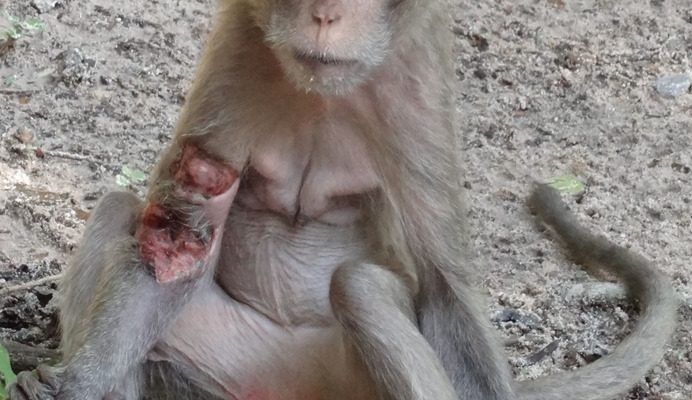In the animal kingdom, survival is a constant struggle, and the relationship between a mother and her offspring plays a pivotal role in this battle. Among primates, particularly in species like monkeys, the bond between a mother and her baby is often a powerful force that can ensure the survival of the young. However, there are instances when something goes terribly wrong, and a baby animal perishes while the mother remains alive. The case of a baby monkey dying while its mother survives can be understood through the lens of biological, social, and environmental factors, revealing that the reasons for such tragedies are often complex and intertwined.
One of the primary reasons for the death of a baby monkey despite the mother’s survival is related to the inherent vulnerability of infant primates. Newborn monkeys, much like other mammals, are highly dependent on their mothers for nourishment, protection, and warmth. At birth, they lack the necessary skills and immunity to survive without constant care. A mother monkey’s role is crucial during this early period of life. She provides not only the physical warmth and shelter but also the emotional and social support that can help her baby develop the skills needed to survive in the wild. Without this care, the baby’s chances of survival are greatly diminished.
However, sometimes, even with the mother’s presence, the baby may die due to various external or internal factors. One such factor could be malnutrition. If the mother is unable to produce enough milk, or if she herself is malnourished, the baby may not receive the nutrients it needs to grow and thrive. In some cases, a mother may be unable to care for her baby adequately due to physical illness or injury. Though the mother survives these conditions, the baby, with its fragile constitution, may succumb to the lack of proper care.
In addition to malnutrition, another key factor that could explain the death of a baby monkey while the mother survives is the presence of disease. Primate populations can be affected by various diseases, some of which are transmissible from mother to infant. However, due to the baby’s immature immune system, it may be more susceptible to infection. The mother, having a more developed immune system, may fight off the disease and survive, while the baby, who lacks these defenses, succumbs to illness. This discrepancy in survival can be especially pronounced in environments where disease is prevalent and where the mother is not able to transfer adequate antibodies to her baby through nursing.
Environmental stressors also play a significant role in the survival of both the mother and the infant. In the wild, mother monkeys and their babies are vulnerable to changes in the environment such as habitat destruction, food scarcity, or increased predation. If the mother is forced to move her baby through dangerous or difficult terrain to find food or shelter, the baby may face greater risks than the mother. The mother may be stronger or more adept at navigating these challenges, but the baby’s small size, lack of experience, and physical fragility can make it more susceptible to injury or exhaustion. In some cases, the mother might even make the difficult decision to abandon or leave her baby behind if it becomes too weak to continue the journey.
Another aspect of this tragedy is the possibility of behavioral or social factors affecting the mother’s ability to care for her baby. In some cases, a mother monkey might face stress due to the presence of other group members, especially if she is a low-ranking female. She might be unable to protect her baby from aggressive or dominant group members who could harm the infant, either intentionally or inadvertently. Such social dynamics can reduce the likelihood of the baby’s survival. Additionally, in some cases, mothers may experience psychological distress that impacts their ability to nurture or protect their young. The hormonal changes that come with the stress of a harsh environment could influence the mother’s maternal instincts, making her less attentive or nurturing toward her baby.
Lastly, it is important to consider the concept of natural selection. In the natural world, not every offspring survives. Evolutionarily, some species have developed mechanisms that favor the survival of the fittest, and in certain instances, the death of a baby may be part of the natural order of things. If the baby monkey is weak or genetically predisposed to health issues, its death may serve as a means to prevent the propagation of those traits. The mother, being healthier or stronger, may be better suited to survive and reproduce again in the future, ensuring the continuation of the species.
In conclusion, the death of a baby monkey while the mother survives is a tragic event that can be attributed to a combination of factors. These include the inherent vulnerabilities of infant primates, malnutrition, disease, environmental stressors, social dynamics, and natural selection. While the mother plays a central role in the survival of her offspring, there are many circumstances in the natural world that can disrupt this bond, leading to heartbreaking outcomes. This tragedy highlights the delicate balance of life in the animal kingdom and the often unpredictable nature of survival.



